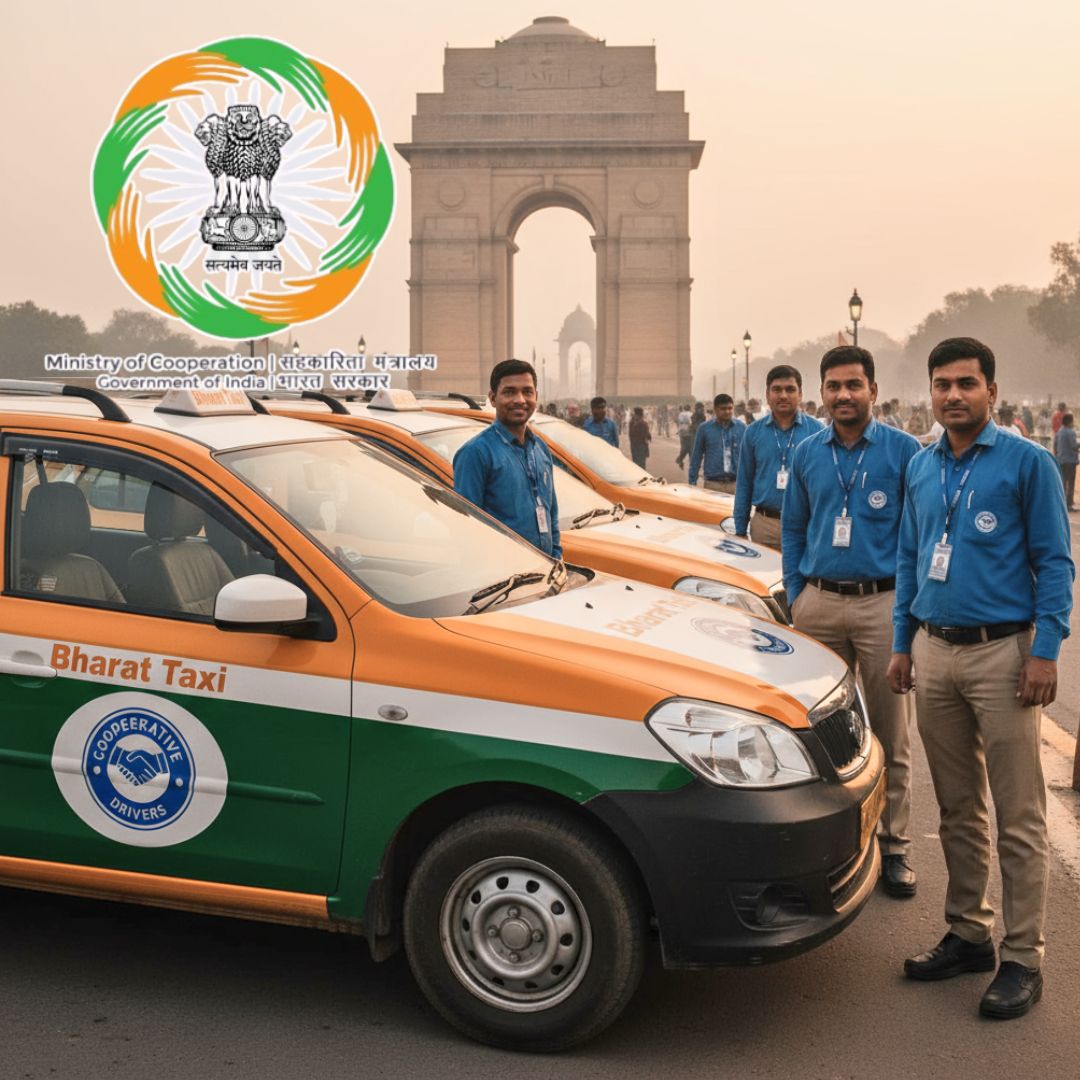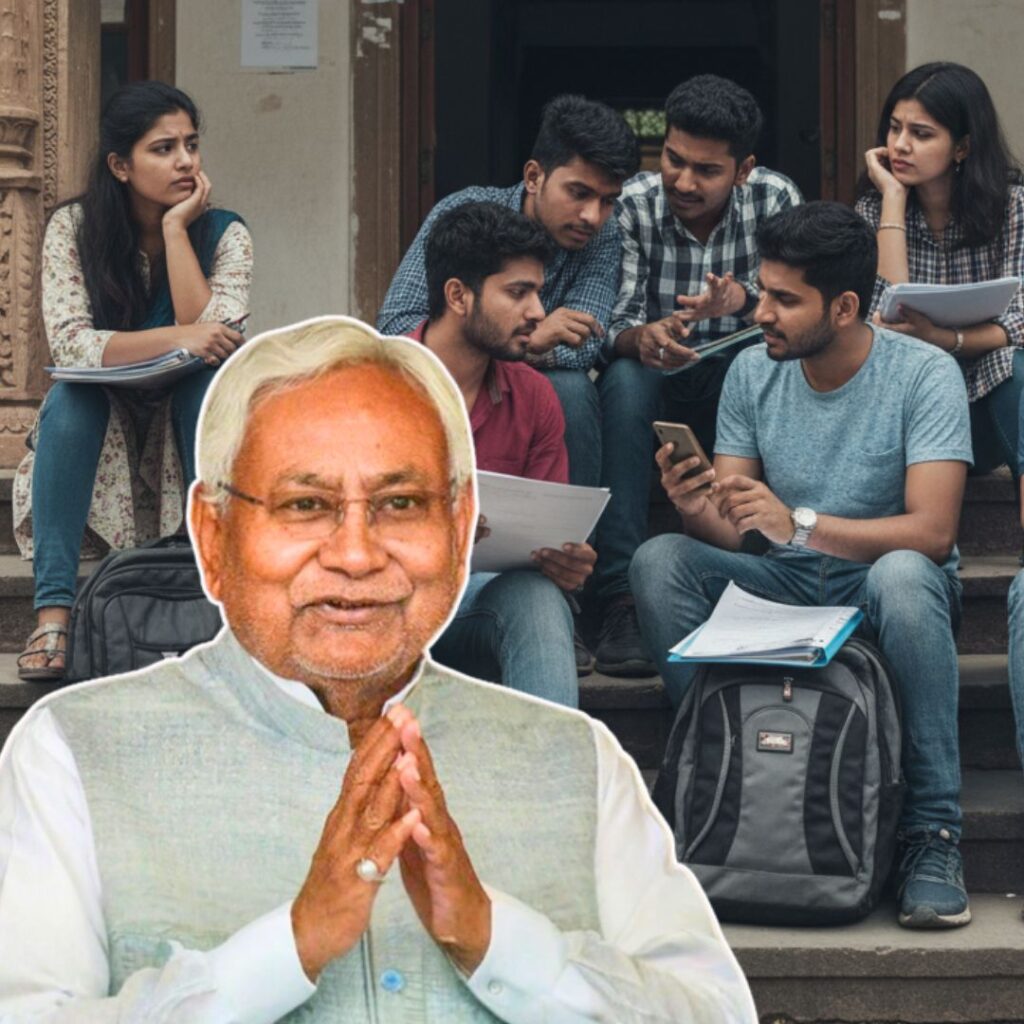The Centre has launched “Bharat Taxi,” India’s first cooperative taxi service, to directly compete with private giants like Ola and Uber. Developed by the Union Ministry of Cooperation and the National e-Governance Division, Bharat Taxi promises zero commission for its member-driver owners, transparent fares, and a commuter-friendly, government-supervised alternative.
The Delhi pilot begins in November 2025 with 650 driver-owners, targeting 5,000 cabs across 20 Indian cities by 2026 and a goal of 1 lakh nationwide by 2030. The initiative aims to empower drivers, address consumer complaints over surges and cancellations, and bring “prosperity through cooperation”.
What Is Bharat Taxi?
Bharat Taxi is a brand-new government-backed cooperative cab service, launched in October 2025 to offer a direct challenge to India’s dominant cab aggregators.
It operates under Sahakar Taxi Cooperative Limited, a newly registered multi-state cooperative holding an initial capital of ₹300 crore and managed by a council led by Jayen Mehta, Managing Director of Amul. Unlike private cab companies, every registered driver becomes a part-owner of the enterprise, with a voice in governance.
How Is Bharat Taxi Different from Ola, Uber?
In contrast to Ola and Uber, Bharat Taxi’s structure removes commission cuts entirely, charging drivers only a nominal membership fee, daily, weekly, or monthly, rather than taking 20%–25% of every fare. The model grants drivers not just higher earnings but also a say in critical fleet and fare decisions.
The Bharat Taxi app matches ride-hailing giants in key features, real-time tracking, SOS, trip sharing, UPI/card payments, and hard guardrails on cancellations and fare changes.
Dispute resolution, strict audits, and multilingual support aim to address both driver and passenger grievances. Officials say government oversight eliminates “unfair trade” seen in surge pricing, platform bias, or device-based fare variations.
What Are Cooperatives?
Cooperatives are member-owned enterprises that operate democratically to share profits and control among contributors. Bharat Taxi’s cooperative approach reflects India’s rich legacy of successful collectives such as Amul (dairy), IFFCO (fertiliser), and NAFED (agriculture marketing). These institutions uplift millions while resisting profit-maximising middlemen.
The government-backed Sahakar Taxi Cooperative is promoted by eight major players, NCDC, Amul, IFFCO, NABARD, and four others, who each contributed ₹10 crore for the pilot. The project supports the “Sahkar se Samriddhi” (prosperity through cooperation) vision endorsed by PM Narendra Modi and Home Minister Amit Shah.
How Will Bharat Taxi Help People
For commuters, Bharat Taxi pledges transparent, stable fares, reliable on-demand service, and better accountability compared to current app-based systems.
For drivers, the shift means complete earnings retention, fairer working conditions, and protection from arbitrary bans or lost income. Women drivers are being prioritised as equity stakeholders in the pilot stages, and the shift to cooperative membership promises long-term wealth creation for driver families.
For the Indian mobility market, Bharat Taxi’s entry is likely to pressure private aggregators to cut commissions, address pricing abuse, improve driver relations, and strengthen passenger protection. With government monitoring, Bharat Taxi aims to prevent device-based fare discrimination and curb market monopolies, potentially reshaping ride-hailing for the everyday Indian.
The Logical Indian’s Perspective
Bharat Taxi signals a bold step towards fairer urban mobility, rooting gig work in community ownership and collective prosperity. For meaningful impact, the cooperative must remain nimble, transparent, and truly inclusive—balancing rapid growth with robust feedback for both drivers and passengers.
Five Questions and Answers About Bharat Taxi
1. What is Bharat Taxi and who is behind its launch?
Bharat Taxi is the country’s first cooperative taxi service, launched by the Ministry of Cooperation and supported by eight major cooperative organizations, including Amul, IFFCO, and the National Cooperative Development Corporation (NCDC). It is operated by the Sahakar Taxi Cooperative Limited, which has an authorized capital of ₹300 crore and a democratically elected governing council chaired by Jayen Mehta of Amul.
2. How is Bharat Taxi different from Ola and Uber?
Unlike Ola and Uber, Bharat Taxi follows a cooperative model where drivers are members and co-owners. Drivers pay a nominal subscription fee instead of commissions on each ride, allowing them to retain their full earnings. The platform ensures transparent, standardized fares and prohibits surge pricing and arbitrary cancellations to protect both drivers and passengers.
3. When and where will Bharat Taxi operate initially and in the future?
The pilot will start in Delhi in November 2025 with 650 driver-owners. By December, this will expand to 5,000 vehicles across multiple metros and, by 2026, will grow to 20 cities, including Mumbai, Pune, Bhopal, Lucknow, and Jaipur. The long-term ambition is to onboard one lakh drivers, covering district headquarters and rural areas nationwide by 2030.
4. How will Bharat Taxi benefit drivers and commuters?
Drivers benefit from full ownership of their income without excessive commission deductions, democratic governance, and support from large cooperatives. Commuters gain access to a fairer, safer, and more affordable transport service with government oversight, app-based convenience, real-time tracking, multilingual support, and standardized pricing without surge charges.
5. What broader impact could Bharat Taxi have on India’s ride-hailing sector?
Bharat Taxi is poised to democratize urban mobility by breaking the monopoly of private players and fostering fair competition. It could pressure existing companies to improve driver earnings and passenger experience while promoting cooperative business models in India’s growing gig economy.











